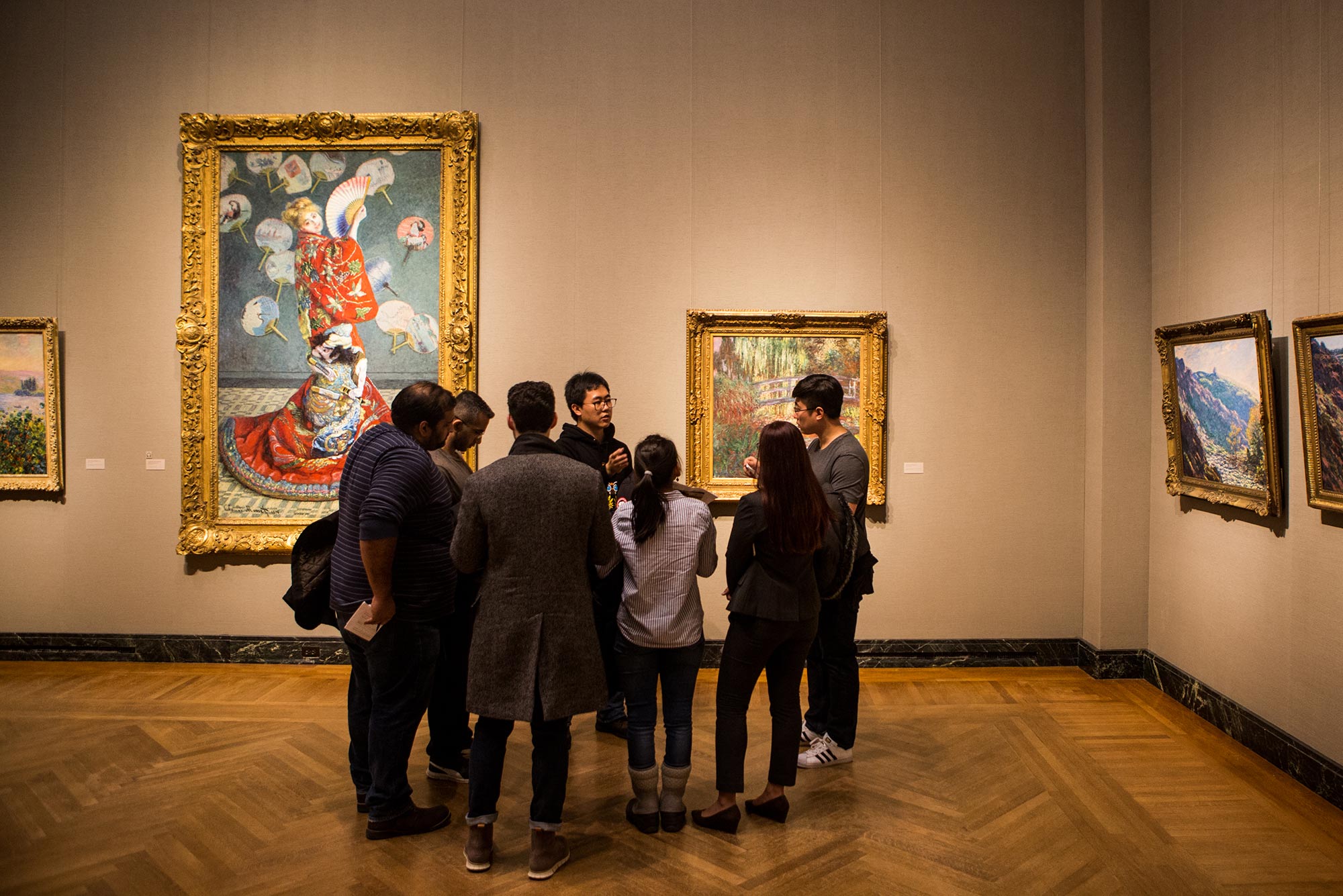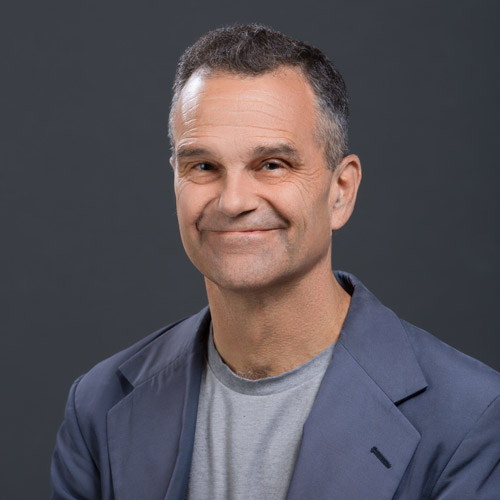Visiting Ancient Worlds Virtually through Student-Made Videos

In the year 2018 BC (Before Coronavirus), BU students in Kyna Hamill’s Ancient Worlds class could savor the Museum of Fine Arts treasures in person. In 2020, the class is taking student-made virtual tours instead. Photo by Jake Belcher
Visiting Ancient Worlds Virtually through Student-Made Videos
Course tours great art from Boston to Paris via technology
Students enrolling in Ancient Worlds this fall knew from the course description that they’d be studying “the origins of civilization,” from Mesopotamia and the Hebrew Bible to the development of Greek civilization through Homer, Athenian tragedy, and the philosophy of Plato. To convey the grandeur of the subject, instructors of the class’ multiple sections had hoped to view some of the treasures in the extensive collections of the Museum of Fine Arts Boston in person.
But as fall loomed, no one could foresee that the MFA would partially reopen September 26 from its pandemic closure, and in any case, an ongoing renovation would put key galleries off-limits. So Kyna Hamill, director of the College of Arts & Sciences Core Curriculum and one of the Ancient Worlds instructors, tweaked a phrase: if the students couldn’t go to the museum, the museum must come to the students.
During the summer, Hamill had overseen undergrads who developed six virtual tours of the MFA, each including views of various other venues of great art: the Louvre in Paris, the Metropolitan Museum of Art in New York, the National Gallery of Art in Washington, D.C., and London’s Courtauld Gallery among them. This fall, Ancient Worlds students are studying the magnificent artwork showcased in these places remotely, through the magic of IT. The developers of the virtual tours designed the videos through the Undergraduate Research Opportunities Program (UROP), which provides funding for faculty-mentored research by undergraduates in the humanities, natural sciences, medicine, arts, and education.
“The UROP students decided to use themes and draw on pieces at the MFA, but also—since we were going virtual—to branch out to works in other museums and spaces,” says Hamill, who also is a College of Fine Arts lecturer. The themes the students chose for the virtual tours were worldliness, creation, grief, filial piety, nature, and rebirth.
While in-person visits to many of the MFA’s galleries are not possible for now, Hamill says, “it is great to be able to use student-generated material to build on what they learned and present their curated tours to the next class. Since we have many faculty teaching—some whose areas are not in visual culture—we can all use the pathway tours differently.”
A filial piety–themed virtual art tour made by UROP students. Courtesy of Kyna Hamill
In fact, the virtual tours expose students to more art than would have been the case otherwise. “No matter which path or paths people choose to view, they will be introduced to artwork that isn’t normally accessible here in Boston,” says Laurel Clark (CAS’23), one of the UROP designers.
“The three of us who worked on this project had all completed the first year humanities sequence” in the Core Curriculum, Clark says. “In determining the themes, we all went back through our experiences, notes, and syllabi to pick out major themes from each semester. Then, we went through all of the art pieces from the MFA that had been used for tours in previous semesters and decided if they fit into those themes, and if so, which they fit best with.”
“When we first started this project, we knew nothing about virtual, interactive portals,” says codeveloper Sabine Ollivier-Yamin (CAS’23), recalling the heavy doses of research and errors required to perfect the virtual tours. “It feels great to have these videos be used.”
She’s particularly proud of the array of cultures whose art the videos showcase, not just “the stuffy, classical, European styles,” she says.
“It was also important to highlight how the history of art is intrinsically intertwined with the legacy of colonialism, imperialism, racism, and all other forms of systemic exploitation,” Ollivier-Yamin says, “to acknowledge how museums themselves played a part in the looting and pillaging of imperialized countries. It is important to acknowledge how museums have suppressed certain voices.”
For Clark, the UROP work was both academically and emotionally fulfilling.
“Before doing this project, I had a very limited understanding of what research could be,” she says. “Over the course of the summer, we hit a lot of roadblocks while figuring out what tools work the best for effectively communicating digital humanities, and all of those experiences are valid and important parts of research. If the platforms we made can help future virtual humanities projects to be even better and more effective, then that seems just as important as the product we created.”
Still, she’s excited that her handiwork is being used in the classroom, especially as some students don’t share her love of museums or can’t get to them because of COVID-19, financial limitations, or other impediments.
The above tour deals with artwork having a creation theme. Courtesy of Kyna Hamill
“If with this project we could make students feel more comfortable seeking out and interacting with art, I see that as a positive to take out of the lockdown experience,” Clark says. “We hope that going through these tours helps students to feel comfortable interrogating art, their own assumptions and responses, and how everything changes depending on context.”
For all the designers’ pride in their work, Ollivier-Yamin confesses to a bittersweet sensation—that the pandemic is crimping fellow Terriers’ enjoyment of art.
“I do feel the general sadness that we’re all feeling right now,” she says. “Of course it’s impossible and unsafe to host the in-person MFA tours now, but they were such an exciting experience before the pandemic.
“Last fall, I remember walking to the MFA in terrible weather, sure my fingers had frozen off and left my body by the time I had arrived, and feeling such a deep sense of relief and warmth when I saw the art firsthand. We were all experiencing something together.”

Comments & Discussion
Boston University moderates comments to facilitate an informed, substantive, civil conversation. Abusive, profane, self-promotional, misleading, incoherent or off-topic comments will be rejected. Moderators are staffed during regular business hours (EST) and can only accept comments written in English. Statistics or facts must include a citation or a link to the citation.